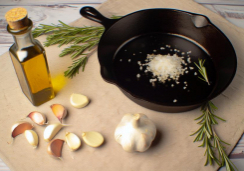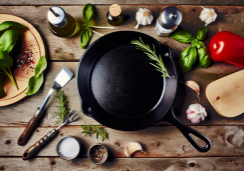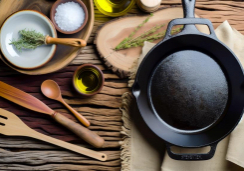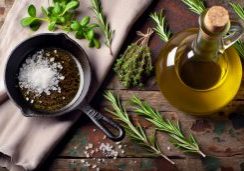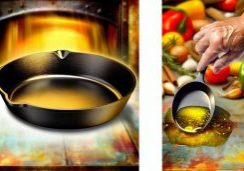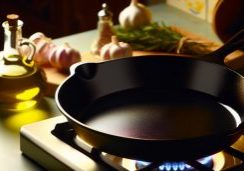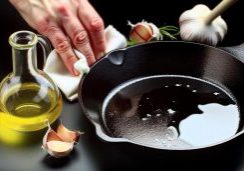Why Opt for Vacuum-Sealed Steak Preparation?
Imagine you've stumbled upon the culinary secret that chefs guard more fiercely than a dragon hoards its treasure: the art of vacuum-sealed steak preparation. By embracing this technique, you're not just cooking; you're elevating your steak to a symphony of flavors and textures that might otherwise be lost.
When you vacuum-seal your steak, you're locking in the freshness and setting the stage for a perfectly tender and juicy experience. It's a method that could transform your home-cooked steak into a rival for even the finest steakhouse.
But how does this seemingly simple act of sealing make such a monumental difference, and what wonders does it work on your choice cuts? Stay with me, and you'll discover how to harness the full potential of your steaks, ensuring that each bite is as memorable as the last.
Benefits of Sous Vide Method
Embracing the sous vide method for cooking steak guarantees you'll achieve uniform and precise results every time. This technique involves a process where your steak is vacuum sealed and then submerged in a water bath at a controlled temperature. The precision of sous vide ensures that your steak is cooked evenly from edge to edge, providing a consistency that traditional methods can't match.
The vacuum-sealed environment locks in the steak's natural flavors and juices, enhancing the overall taste and aroma. Unlike grilling or pan-frying, where high heat can cause moisture loss, sous vide retains all the succulence of the steak, ensuring each bite is as flavorful as the last.
Moreover, sous vide's gentle cooking method means your steak reaches the perfect level of tenderness without the risk of overcooking. This is particularly beneficial for more expensive cuts that you'd want to treat with extra care. With sous vide, you can also easily monitor the cooking process. There's no need for repeated temperature checks or poking; the water bath maintains the ideal temperature throughout.
Selecting the Right Cut
How do you choose the ideal steak cut to complement your sous vide endeavors, ensuring both flavor and tenderness? When your steak is going into a vacuum sealer and then into a precise temperature-controlled water bath, every detail counts. Here are key factors to consider:
- Marbling: Look for cuts with good marbling. More fat marbling equates to richer flavor and a more tender eating experience.
- Suitability for Cooking Method: Not all steaks are created equal. Some are perfect for the high heat of grilling, while others shine when slowly brought up to temperature in a sous vide bath.
- Thickness: Opt for thicker cuts. They benefit greatly from sous vide's even cooking and are super easy to finish with a quick sear without overcooking.
- Cut Characteristics: Explore different steak cuts. Ribeyes are known for their flavor, sirloins for their leanness, and filet mignons for their tenderness.
Your choice should align with your taste, the desired outcome, and, of course, your budget. By analyzing these aspects, you'll ensure that your vacuum-sealed steak preparation leads to a mouthwatering meal every time.
Vacuum-Sealing Techniques
To maximize the freshness and longevity of your steaks, mastering vacuum-sealing techniques is crucial before storing or cooking sous vide. When you vacuum seal your steaks, you're actively extending their shelf life, ensuring they last a long time in the freezer—ribeye steaks, for instance, can stay fresh for 2-3 years when properly sealed. Every time you prepare to seal your steaks, make sure to remove as much air as possible from the package. This step is essential to prevent freezer burn and maintain the quality of the meat.
Additionally, labeling your vacuum-sealed packages is a must. It isn't just about organization—it's about knowing exactly what you have and avoiding unnecessary package openings that could compromise the seal and the steak's freshness.
Remember that the vacuum sealing process, especially when combined with water submersion methods, significantly reduces oxygen exposure. This is fundamental for preserving your steaks for a long time without sacrificing flavor or texture.
Perfecting the Temperature
Achieving the perfect temperature when cooking your steak is a fine art, essential for ensuring its flavor and tenderness are fully realized. With vacuum-sealed steak preparation, perfecting the temperature is even more crucial since you're aiming for precision without the cues of traditional cooking methods.
Here's how you can master this crucial step:
- Preheat Your Equipment: Whether it's a sous-vide machine or a grill, ensure it's at the desired temperature before you start. This consistency is key to cooking your steak evenly from one side to the other.
- Monitor the Core Temperature: Using a meat thermometer, check the internal temperature of your steak to avoid over or undercooking. This tool is your best friend in perfecting the temperature.
- Factor in Resting Time: After cooking, let your steak rest for a few minutes. During this time, the temperature will continue to rise slightly, and juices will redistribute within the meat.
- Learn Your Preferences: Over time, keep notes on the temperatures that work best for different cuts and thicknesses. The perfect temperature for a filet mignon will differ from that of a ribeye.
How Does Vacuum-Sealing Steak Help in Ensuring Perfect Cooking?
Vacuum-sealing steak is one of the best tips for vacuum-sealed steaks to ensure perfect cooking. When you vacuum-seal steak, it removes air, preventing ice crystals from forming, which can affect the taste and texture of the meat. It also helps to marinate the steak thoroughly for consistent flavor.
Finishing With a Sear
Once your steak has reached the desired internal temperature through sous-vide, it's crucial to give it a flavorful sear that creates a delectable crust and seals in the savory juices. Searing adds not only a caramelized crust but also enhances the steak's flavor and texture. This step shouldn't be underestimated; it's where the magic truly happens.
A quick, high-heat sear post-sous-vide ensures the development of a delicious contrast in texture. The exterior of the steak becomes crisped and browned, offering a satisfying crunch against the tender, evenly cooked interior. The Maillard reaction, which is responsible for this transformation, is a chemical process that greatly amplifies the steak's flavor profile.
To achieve the perfect sear, you'll need to preheat your skillet, grill, or torch until it's sizzling hot. I'm going to stress the importance of not overcrowding the pan—this ensures that each steak sears rather than steams. Keep in mind, a proper sear doesn't take long, typically only a minute or two on each side.
Conclusion
You've explored the perks of sous-vide and vacuum-sealed steak prep. Selecting quality cuts and mastering vacuum-sealing techniques are crucial. By controlling the temperature precisely, you ensure even, perfect cooking.
Don't forget the final sear—it's key for that irresistible crust. Embrace this method for steak that's consistently flavorful, tender, and preserved at its peak.
Vacuum-sealed steak preparation isn't just a technique; it's your path to culinary excellence with every bite.

